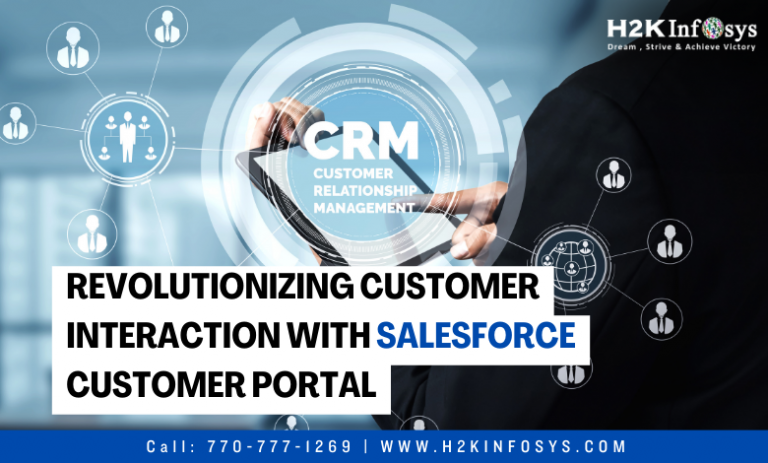In the rapidly evolving digital landscape of today, businesses are always looking for new and creative methods to improve customer service and interaction. In the meanwhile, a third-party Salesforce Customer Portal has become an indispensable tool that is transforming the way businesses interact with their customers. This article explores the fundamentals, advantages, and real-world uses of the Salesforce Customer Portal, highlighting its crucial role in modern customer service. Check out the Salesforce certification course online to learn more.
What is a Salesforce Customer Portal?
A personalized customer space for your website can be created with the Salesforce Customer Portal, an add-on for Salesforce CRM. It serves as a link between clients and the vital resources and services your company offers. In a safe and convenient setting, this interactive portal provides a number of services, such as access to account information, direct help requests, and a knowledge base.
Essential Features of the Customer Portal for Salesforce
The portal is brimming with tools to improve the user experience:
- Case Management: Without making constant phone calls or emails, clients can record assistance requests and monitor their progress.
- Knowledge Base: Customers can look for answers on their own by using this archive of resources, articles, and frequently asked questions.
- Account Management: Customers are able to examine and control their orders, transactions, and account information.
- Customization: The portal’s appearance and feel may be altered to match your brand, making for a smooth user experience.
The Reasons Your Business Requires a Salesforce Customer Portal
There are multiple advantages for your company when you implement a Salesforce Customer Portal.
- Customer Empowerment: Providing self-service choices enables clients to take care of many of their requirements on their own, which boosts client happiness.
- Efficiency: Your customer support staff can concentrate on handling more complicated inquiries because the portal lightens their workload.
- Data centralization: By offering a consolidated platform for client communications, it guarantees dependability and consistency in customer support.
Implementing a Salesforce Customer Portal in Your Business
Salesforce Customer Portal implementation is a strategic procedure that needs to be carefully planned and carried out. Start by outlining the portal’s goals precisely. What goals do you have in mind? Is it lightening the workload for your customer support representatives, offering a more captivating user experience, or optimising your sales procedure? It’s also critical to comprehend the requirements and expectations of your clients. Get comments or conduct surveys to find out which features people would find most helpful.
Making the gateway seem like an extension of your business requires customization. A variety of customization choices are available with Salesforce Customer Portals, ranging from the user interface to particular features and functions. Make sure the user experience is seamless and that the design and usability complement your brand identity.
Integrating your customer management strategy with your current Salesforce CRM system is crucial. The portal and CRM can exchange data seamlessly thanks to this connectivity, guaranteeing that every customer encounter is monitored and efficiently handled.
Teaching your employees how to use the portal is just as crucial as instructing your clients. To properly serve customers, your team should be well-versed in the portal’s functionality. In a similar vein, offering clients guides or resources on how to utilise the portal would improve their experience and promote uptake.
Navigating the Challenges
Although the Salesforce Customer Portal has many advantages, there could also be some drawbacks. Adoption by users might be a big obstacle. Make the portal easy to use and intuitive to promote adoption. Frequent dissemination of information regarding the features and advantages of the site helps boost user involvement.
Sometimes, integration with current systems can be difficult. Making sure the gateway works flawlessly with your present Salesforce configuration and any other third-party programs you use is crucial. This could call for more customization or development effort.
It is essential to keep the content on the site current and pertinent. Outdated information can undermine confidence and cause customer unhappiness. Assign team members to oversee the process of updating the information on a regular basis.
Looking Ahead: The Future of Salesforce Customer Portals
Salesforce Customer Portals have an exciting future ahead of them because of developments in AI and machine intelligence. Users may be able to have more predicted and tailored experiences thanks to these technologies. AI, for instance, can assist in providing tailored support or recommendations based on the preferences and past interactions of the client.
The effectiveness of the site can be further increased by integrating chatbots and virtual assistants. These tools can help users in a hurry, respond to frequently asked questions, and even guide them through the portal, enhancing their entire experience.
Furthermore, by incorporating advanced analytics, organisations will be able to better understand the behaviour and preferences of their customers and customise their services and offerings.
Conclusion In today’s digital landscape, a Salesforce Customer Portal is more than simply a tool—it’s a strategic asset that’s essential for improving customer satisfaction and expediting service operations. The capabilities of these portals will grow along with customer expectations, making them essential for businesses that priorities customer satisfaction. To learn more about Salesforce, check out our Salesforce admin certification course.






























2 Responses